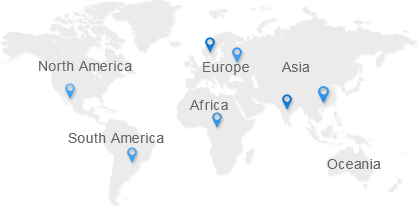GlobalData 5G competitiveness review series 3: 5G carries key technologies and mainstream suppliers

Global Data, a well-known consulting company, recently published the Review of 5G technology readiness and commercialization report, which assessed the key technologies in the three fields of 5G RAN, 5G Core and 5G Transport and commented on the 5G competitiveness of mainstream providers in the industry.
In the field of 5G Transport, Global Data selected Huawei, ZTE, Ericsson and Nokia as four mainstream suppliers. Ciena, Infinera and Fujitsu are in the challenger camp. This report excerpts from the report's core views on the key technologies of 5G Transport and the four mainstream providers.
Key technologies for 5G bearing
performance for 5G carrying capacity (prequel, middle and back) or the entire transmission network. At the same time, the bandwidth requirements of the carrying network are also changed with the change of wireless channel bandwidth. For example, when the bandwidth of the channel spectrum is expanded from 10-20mhz to 200MHz, the bandwidth required for forward transmission is also increased from several Gbps to dozens of Gbps.
5G also introduces a very strict time synchronization standard in the load carrying network. Maximum deviation from the 5G standard of full network synchronization as defined by itu-t and 3GPP is 1.5 LVS. In addition, inter-band CA requires time accuracy within +/-130ns, while 5G requires synchronization accuracy within +/-10ns.
The control system of the load carrying network needs to be closely combined with the wireless control system to provide dynamic network slices for 5G application scenarios, which requires the control system of the load carrying network to introduce SDN and realize automatic operation and maintenance, and to introduce SR and other technologies across IP and optical network domains.
Competitive landscape for 5G carriers: four leaders
Ericsson launched 5G carrying products in September 2018, while combining the products of two partners, Juniper and ECI, to form its own end-to-end solution. In the collaboration, Juniper provides router components (also used in Ericsson 6000 router's Junos operating system), while ECI provides optical-return and metropolitan grouping optical platforms. Ericsson manages 5G carriers with other networks by providing unified control, management, and choreography functions, as well as network automation functions. Different from Ericsson's cooperation in 5G carrying solution, Huawei, Nokia and ZTE have completed the R & D of all the equipment and solutions of 5G carrying.
Huawei introduced the 5g-ready carrier solution x-haul in August 2017. The scheme includes various technologies such as optical transmission, router and microwave. Huawei's solution supports source routing, Flex E, 50GE interfaces, high-precision synchronization options, and control and management capabilities. Huawei's microwave solution achieves 10GE to base station, and its optical transmission can provide up to 100GE link bandwidth through all-outdoor WDM equipment. Huawei 5G transmission supports end-to-end network slicing and automation functions, including network SLA self-optimization.
Nokia introduced the Anyhaul mobile carrier solution in February 2017. The solution includes 5G ready solution for forward, middle and back transmission, which is divided into microwave, optical fiber, IP and broadband. Nokia's 5G carrying mode started with 10GE site connection as the standard, and realized SDN and virtualization on the whole veneer, providing programmable IP interconnection to meet higher business requirements. Nokia offers 7250 ixr-r6 routers, 1830 PSS and VWM optical transport components, Wavence microwave products, 7360 ISAM FX and ISAM ONT 10Gbps enabled PON devices as part of the Anyhaul solution.
ZTE launched 5G Flexhaul bearing solution at the MWC exhibition in February 2017, and successively launched multiple 5G carrying products in 2017 and 2018. ZTE 5G Flexhaul solution based on SDN SR and FlexE technology provides simplified programmable IP connectivity. 5G Flexhaul adopts FlexE extended FlexE Channel, which can realize ultra-low delay forwarding and fast business protection switching to meet the strict QoS requirements of 5G. The 3A (precise time source, advanced timestamp, adaptive time algorithm) synchronization solution proposed by zte can achieve the end-to-end synchronization accuracy within +/ -100ns.
Source from: C114






